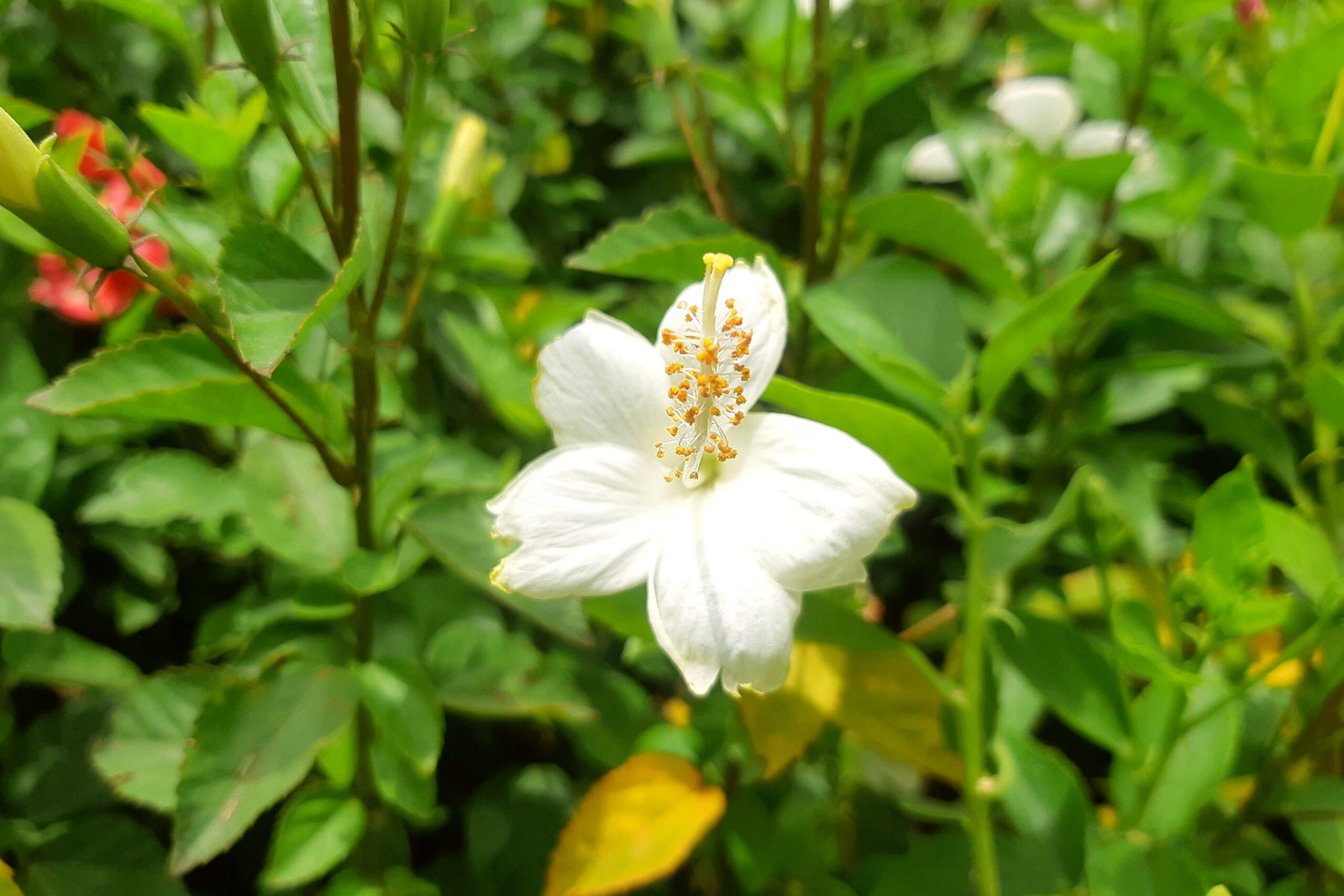Introduction to Orchids
Orchids, a diverse and widespread family of flowering plants, belong to the Orchidaceae family. Known for their intricate and often fragrant flowers, orchids boast over 25,000 species and 100,000 hybrids, making them one of the largest plant families in existence. Originating from a variety of habitats, orchids can be found in tropical rainforests, temperate zones, and even arid regions. However, the majority of species thrive in tropical and subtropical climates, where humidity and warmth create ideal growing conditions.
Many types of orchids are commonly kept as houseplants due to their striking appearance and the relative ease of care they require under the right conditions. Popular varieties include the Phalaenopsis, or moth orchid, known for its broad, flat petals and prolonged blooming period, and the Dendrobium, which features delicate, cascading flowers. Other well-loved types are the Cattleya, renowned for their vibrant colors and fragrant blooms, and the Oncidium, often referred to as “dancing ladies” due to their unique flower shapes.
The popularity of orchids among plant enthusiasts can be attributed to several factors. Their exotic beauty and wide array of colors and patterns make them a visually appealing addition to any indoor garden. Additionally, orchids have the remarkable ability to rebloom year-round with proper care, bringing continuous joy to their caretakers. The allure of successfully nurturing a plant that is often perceived as delicate and challenging adds to the satisfaction of orchid cultivation. Furthermore, orchids’ longevity and potential for long-lasting blooms, unlike many other houseplants, make them a rewarding choice for both novice and experienced gardeners.
Overall, the appeal of orchids lies not only in their physical beauty but also in the sense of accomplishment they provide. With the right knowledge and care, these magnificent plants can thrive and bloom, offering a year-round splash of elegance and color to any home.
Choosing the Right Orchid
When embarking on the journey of orchid care, one of the most crucial steps is selecting the right type of orchid for indoor growing. Among the myriad varieties available, three types stand out for their adaptability and beauty: Phalaenopsis, Cattleya, and Dendrobium.
Phalaenopsis, commonly known as the moth orchid, is a popular choice for beginners due to its ease of care and long-lasting blooms. These orchids thrive in moderate light and are known for their stunning, butterfly-like flowers. Cattleya orchids, often referred to as the queen of orchids, are prized for their vibrant colors and large, fragrant flowers. They require bright, indirect light and a bit more attention than Phalaenopsis, but their breathtaking blooms make the effort worthwhile. Dendrobium orchids, with their delicate, elongated blooms, offer a diverse range of species and hybrids. They typically prefer cooler temperatures and can adapt well to indoor environments.
When selecting an orchid from a nursery or store, it’s essential to choose a healthy specimen to ensure successful growth and flowering. Start by examining the leaves, which should be firm, green, and free from spots or blemishes. Avoid plants with yellowing or wilted leaves, as these may indicate underlying health issues. Next, inspect the roots; healthy orchid roots are generally thick, firm, and green or white. Be cautious of plants with shriveled or blackened roots, as these are signs of poor health.
Additionally, consider the overall condition of the plant. A healthy orchid should have a well-balanced structure with no signs of pests or disease. It’s also beneficial to choose a plant with multiple buds, as this indicates future blooming potential. By carefully selecting your orchid, you set the foundation for successful care and year-round blooming.
The Ideal Environment
Creating the ideal environment for orchids is crucial to ensuring their vibrant and continuous blooming. Orchids thrive when their surroundings closely mimic their natural habitats, typically found in tropical and subtropical regions. Key to this is understanding their specific light, temperature, and humidity needs.
Light: Orchids require a balance of light that is neither too intense nor too dim. They flourish in indirect, bright light. For indoor cultivation, positioning orchids near east or south-facing windows can provide adequate light. If natural light is insufficient, especially during winter months, grow lights can be an effective alternative. These lights should be placed 6 to 12 inches above the orchids and kept on for 12 to 16 hours daily to simulate natural sunlight.
Temperature: The temperature needs of orchids vary slightly depending on the species, but most prefer a daytime temperature range of 70-80°F (21-27°C) and a nighttime drop to 55-65°F (13-18°C). This fluctuation is important as it mimics the natural temperature variation orchids would experience in the wild. Using thermostats and programmable heaters or air conditioners can help maintain these conditions indoors.
Humidity: Orchids flourish in environments with 50-70% humidity. Indoor air, especially during winter with heating systems running, can be quite dry, necessitating measures to increase humidity. Humidity trays—shallow trays filled with water and pebbles placed under orchid pots—can help. As the water evaporates, it increases the humidity around the plants. Additionally, using a room humidifier or grouping plants together can create a microenvironment with higher humidity levels.
By carefully managing these environmental factors, you can create an indoor setting that supports the healthy growth and blooming of your orchids year-round. The key is to continually monitor and adjust the conditions to ensure they remain within the optimal ranges for these beautiful and delicate plants.
Watering Your Orchids
Orchids have unique watering needs that differ significantly from other houseplants. The key to successful orchid care is understanding the delicate balance required to keep them hydrated without overwatering. Overwatering is one of the most common mistakes made by orchid enthusiasts, leading to root rot and other issues. Conversely, underwatering can cause dehydration and impede blooming. Striking the right balance is essential for keeping your orchids healthy and vibrant.
The frequency of watering largely depends on the type of orchid you have. For instance, Phalaenopsis orchids typically require watering every 7-10 days, while Dendrobiums and Cattleyas may need watering every 5-7 days. The general guideline is to water orchids when the potting medium is almost dry but not completely parched. A useful method to determine the right time to water is by inserting your finger about an inch into the potting medium; if it feels dry, it’s time to water.
Proper watering technique is crucial. When watering, ensure that water flows freely through the pot’s drainage holes. This helps to flush out any accumulated salts and prevents water from stagnating at the roots. One effective method is to water orchids in the morning, allowing excess moisture to evaporate throughout the day, which reduces the risk of fungal infections. It’s also recommended to use room-temperature water to avoid shocking the roots.
Choosing the right type of water can significantly impact your orchid’s health. Rainwater or distilled water is preferred over tap water as they are free from chemicals such as chlorine and fluoride, which can harm orchids. If you must use tap water, let it sit out overnight to allow some of these chemicals to dissipate.
Signs of overwatering include yellowing leaves, mushy roots, and a foul odor emanating from the potting medium. On the other hand, underwatering symptoms include shriveled leaves, dry roots, and slowed growth. By paying close attention to these indicators and adjusting your watering practices accordingly, you can ensure that your orchids remain healthy and blooming throughout the year.
Feeding and Fertilizing
Orchids, like all plants, have specific nutritional needs that must be met to ensure healthy growth and consistent blooming. Understanding the role of fertilizers and proper feeding schedules is crucial for maintaining vibrant and thriving orchids. Orchids generally require a balanced fertilizer that provides essential nutrients such as nitrogen, phosphorus, and potassium, along with trace elements like calcium, magnesium, and iron.
When selecting a fertilizer, it is recommended to choose one specifically formulated for orchids, as these products are tailored to meet the unique needs of these plants. A balanced 20-20-20 formula is often ideal, but you can also opt for a 30-10-10 fertilizer during the growing season to promote robust foliage and root development. During the blooming season, switching to a 10-30-20 fertilizer can enhance flower production and longevity.
Establishing a consistent feeding schedule is essential. Orchids typically benefit from being fed every two weeks during the growing season (spring and summer) and once a month during the dormant period (fall and winter). It is important to dilute the fertilizer to half the recommended strength to avoid over-fertilization, which can lead to root burn and other issues.
Avoiding common fertilizing mistakes is key to successful orchid care. Over-fertilizing is a frequent error, leading to salt buildup in the potting medium, which can harm the roots and inhibit nutrient uptake. To prevent this, it is advisable to flush the potting medium with plain water monthly to remove any accumulated salts. Additionally, always ensure the potting medium is moist before applying fertilizer to avoid burning the roots.
By understanding the nutritional needs of orchids and implementing a thoughtful feeding regimen, you can support your orchids’ health and encourage continuous blooming throughout the year. Paying attention to the specific requirements of different orchid species will further enhance your success in orchid care.
Repotting Orchids
Repotting orchids is an essential aspect of their care, ensuring they continue to thrive and bloom. Over time, the potting medium in which orchids grow can break down, leading to poor aeration and water drainage. Repotting helps refresh the medium, providing optimal conditions for root health. It is generally recommended to repot orchids every one to two years, or when you notice the medium has decomposed, roots are outgrowing the pot, or the plant appears stressed.
Choosing the right potting medium is crucial. Orchids typically prefer a loose, well-draining mix. Bark, sphagnum moss, perlite, and coconut husk are popular choices. The specific blend can vary depending on the orchid species. For instance, Phalaenopsis orchids thrive in a bark mix, while Paphiopedilum orchids often benefit from a finer medium.
The type of pot used is also important. Transparent plastic pots are favored by many orchid enthusiasts as they allow light to reach the roots, promoting photosynthesis. They also help monitor root health and moisture levels. However, clay pots are another viable option, providing better aeration but requiring more frequent watering.
The process of repotting orchids involves several steps. Begin by gently removing the orchid from its current pot. Carefully shake off the old medium and rinse the roots if necessary. Trim any dead or rotting roots with sterilized scissors. Place a layer of fresh potting mix in the new pot before positioning the orchid. Ensure the plant is centered and add more mix around the roots, gently tapping the pot to settle the medium without compacting it too tightly.
To minimize stress during repotting, water the orchid a day before the process, making the roots more pliable and less prone to breakage. Post-repotting, keep the orchid in a shaded area for a few days, gradually reintroducing it to its usual environment. Avoid fertilizing for at least a week to allow the plant to acclimate.
By following these steps, you can ensure your orchids remain healthy and vibrant, ready to bloom year-round.
Dealing with Pests and Diseases
Orchids, though resilient, can be susceptible to a variety of pests and diseases that can hinder their growth and blooming. Understanding how to identify and manage these issues is crucial for maintaining healthy orchids.
Common pests that affect orchids include spider mites, aphids, and scale insects. Spider mites are tiny arachnids that suck the sap from orchid leaves, causing them to turn yellow and eventually drop. Aphids, on the other hand, are small insects that feed on the plant sap, leading to stunted growth and distorted leaves. Scale insects appear as small, round bumps on the leaves and stems, and can cause significant damage by feeding on the plant’s sap.
Root rot is another common issue, often caused by overwatering or poor drainage. This fungal disease leads to the decay of the orchid’s roots, resulting in wilted leaves and stunted growth. To prevent root rot, ensure your orchid is planted in well-draining media and avoid letting the roots sit in water.
For controlling pests, several solutions are available. Natural treatments include neem oil, insecticidal soap, and beneficial insects like ladybugs that prey on aphids. Chemical treatments, such as systemic insecticides, can also be effective but should be used with caution to avoid harming the plant. Regularly inspecting your orchids for signs of pests and diseases and promptly addressing any issues can prevent them from becoming severe.
Preventative measures are key to keeping your orchids healthy. Maintain proper watering practices, ensuring the roots are not waterlogged and the leaves stay dry. Provide adequate air circulation around your orchids to prevent fungal infections. Additionally, quarantine any new plants before introducing them to your collection to ensure they are pest-free.
By staying vigilant and taking proactive steps, you can effectively manage pests and diseases, ensuring your orchids stay vibrant and blooming year-round.
Encouraging Year-Round Blooming
Maintaining the continuous blooming of orchids requires a blend of meticulous care, understanding of the species-specific blooming cycles, and the ability to trigger reblooming effectively. To start, it is crucial to create and sustain optimal care conditions. Orchids thrive in environments where temperature, light, humidity, and watering are meticulously balanced. Ensure that your orchids receive bright, indirect sunlight and maintain temperatures between 60-80°F (15-27°C), as fluctuating temperatures can stress the plants and hinder blooming.
Understanding the blooming cycles of different orchid species is key to encouraging year-round flowering. Each species has its own rhythm; for instance, Phalaenopsis orchids typically bloom in winter to spring, while Dendrobium orchids may bloom in response to seasonal changes. Familiarize yourself with the specific needs and cycles of your orchid variety to better anticipate and support its blooming phases.
Triggering reblooming involves a combination of techniques tailored to your orchid’s species. One effective method is to induce a temperature drop of about 10°F (5°C) during the night for a few weeks, which can stimulate the plant to initiate a new bloom cycle. Additionally, adjusting the light exposure by slightly increasing or decreasing the intensity can also encourage reblooming. Proper fertilization plays a significant role; use a balanced orchid fertilizer to provide essential nutrients, applying it sparingly during the growing season and reducing it during dormancy periods.
Patience and consistency are vital in orchid care. Regularly monitor your plants for signs of stress or disease, and address any issues promptly. Consistently providing the right care conditions will support the plant’s natural growth and blooming processes. Remember, orchids require time to adjust to changes in their environment, and it may take several months for them to respond to your efforts fully. By understanding their cycles and maintaining a stable care routine, you can enjoy the beauty of blooming orchids throughout the year.













+ There are no comments
Add yours